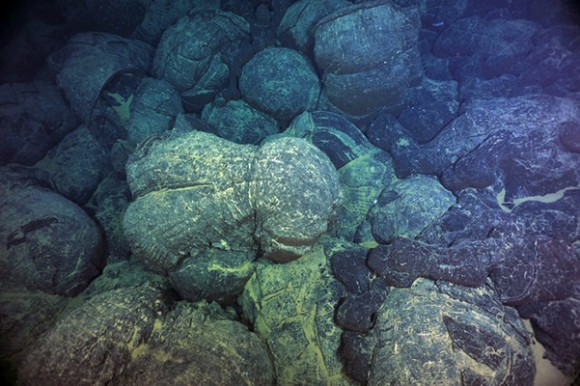
Magma from undersea eruptions congealed into forms known as pillow basalts on the Juan De Fuca Ridge, off the U.S. Pacific Northwest. A new study shows such eruptions wax and wane on regular schedules. Image credit: Deborah Kelley/University of Washington
Magma from undersea eruptions congealed into forms known as pillow basalts on the Juan De Fuca Ridge, off the U.S. Pacific Northwest. A new study shows such eruptions wax and wane on regular schedules. Image credit: Deborah Kelley/University of Washington
A new study, published February 6 in the journal Geophysical Research Letters, suggests that undersea volcanic pulses — apparently tied to short- and long-term changes in earth’s orbit, and to sea levels – may help trigger natural climate swings.
Vast ranges of volcanoes hidden under the oceans are presumed by scientists to be the gentle giants of the planet, oozing lava at slow, steady rates along mid-ocean ridges. The new study shows that they flare up on strikingly regular cycles, ranging from two weeks to 100,000 years—and, that they erupt almost exclusively during the first six months of each year.
Scientists have already speculated that volcanic cycles on land emitting large amounts of carbon dioxide might influence climate. But up to now there was no evidence from submarine volcanoes. The new findings suggest that models of Earth’s natural climate dynamics, and by extension human-influenced climate change, may have to be adjusted.
